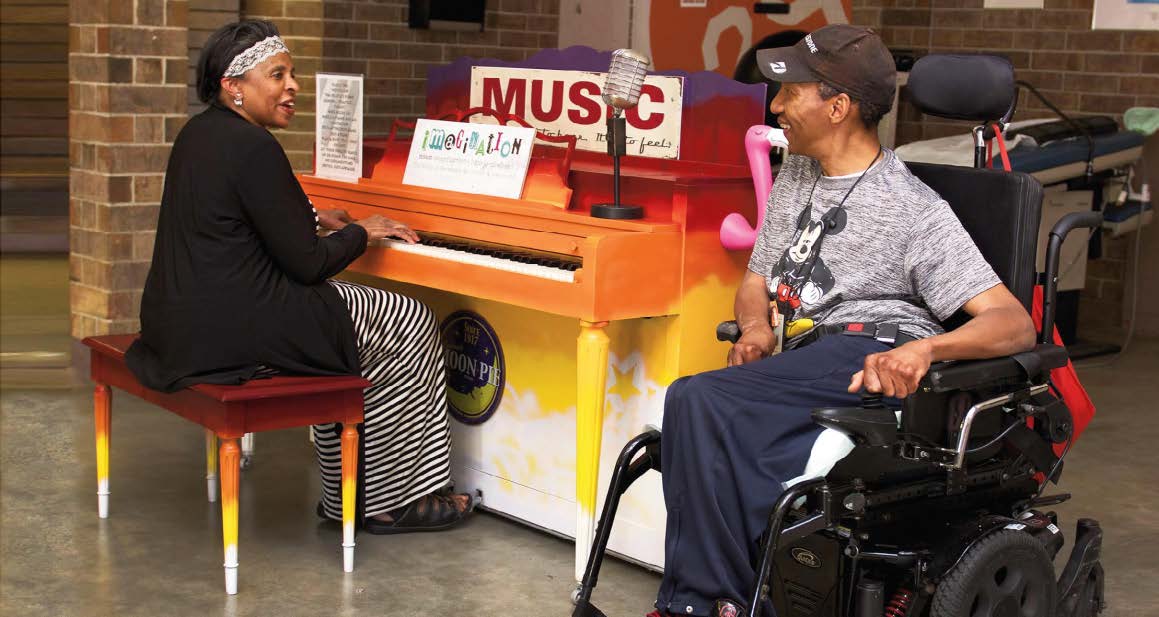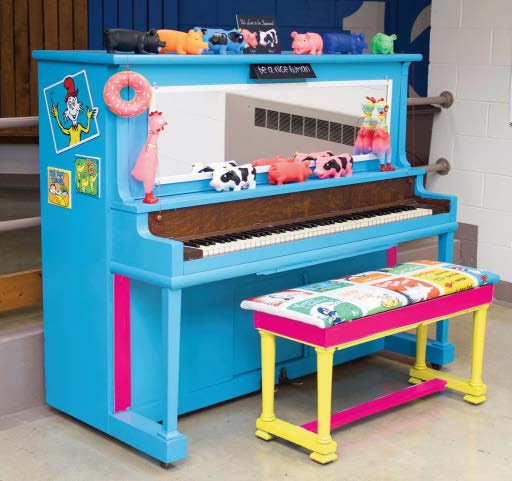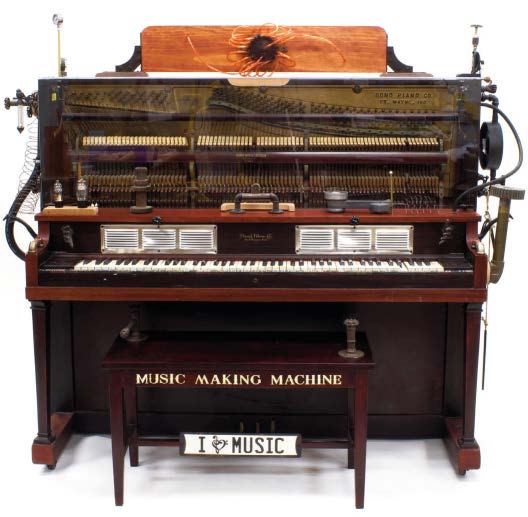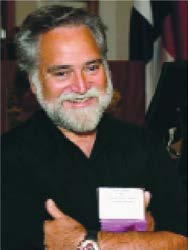ANCORA IMPARO
RICK RADER, MD ■ EDITOR-IN-CHIEF

The Player Pianos at Orange Grove
The Player Pianos at Orange Grove The Player Pianos at Orange Grove have changed the way people relate to one another. Sometimes they are partners, sometimes they are players, and sometimes they are simply an appreciative audience. But they are all connected and engaged.
Several years ago, I found myself in the Dublin train station. There was a piano sitting in the main thoroughfare of the station. It was out in the open. It wasn't chained down. It wasn't for sale. And it wasn't sponsored by Guinness. It was just there. There and waiting for anyone to have a go at the keys. It had a simple sign on the sheet music stand, "Play Me, I'm Yours."
And people did. All kinds of people playing all kinds of music. Some of the music even sounded like music. It was simple, beautiful, and inspiring, and it needed to be at the Orange Grove Center, my professional digs for the past twenty-five years. "Play Me, I'm Yours" was the creation of British artist Luke Jerram. In 2008, Jerram created the concept of installing multiple street pianos in London as a challenge to the prohibition of playing music in public places without special arrangement. It prompts members of the public to use the piano, regardless of skill and popularity. The idea was embraced worldwide and there are currently 7,177 public pianos in 114 countries. Talk about an idea that caught fire. Local artists are invited to paint, decorate, and embellish the upright pianos.
It doesn't matter what the musical skill level of the players are. You can hear Carnegie Hall-level performances and well as missed notes that are an attempt at Three Blind Mice. The public pianos adhere to the observation of American jazz pianist and composer Thelonious Monk, "The piano ain't got no wrong notes."
Around the year 1700, an Italian named Bartolomeo Cristofori was employed by Ferninando de' Medici, Grand Prince of Tuscany, as the Keeper of the Instruments. Seems at the time, the harpsichord was a difficult instrument to master and Cristofori had the idea to use hammers to strike the strings. This served as the impetus for the creation of the piano as we know it today. Cristofori had no idea that one day, his contraption would serve as a public attraction allowing strangers to stop in their tracks and contemplate how they could manipulate 88 black and white keys to create something. Something that could soothe you, arouse you, relax you, and make you tap your feet. So far as we know it, no one playing a public piano has been booed or blocked, or had to duck from hurling tomatoes.
After experiencing the Dublin public piano (and personally slapping the ivories), I went to visit my colleague, Carolyn Brown, the lead champion of the Orange Grove Center's Music Program. Carolyn is a gem who has used music to entertain, teach, and encourage individuals with intellectual and developmental disabilities to enjoy and encourage their untapped musical talents in a variety of settings and formats.
I knew if anyone could find us our first piano it would be Carolyn. Her renown and networking in the Chattanooga music community helped to locate and acquire our first donated piano. We assigned the decorating to Karsten Richards, an artist as well as a classroom assistant in the Orange Grove School. He created an upbeat design and we embell ished it with novel attachments, including an old-fashioned microphone. No sooner was it placed in the hall with a sign that invited anyone "without skills, practice, lessons or talent" to have a go at it that it became a popular hang-out, a destination. Staff, visitors, and individuals formed spontaneous duets, ensembles, dance troupes and finger-snapping gatherings. We soon added some simple instruments, tambourines, maracas, triangles, board and sticks, and it became what it was intended to do… provide a place, a purpose and a pursuit... all in the name of joy, inclusion and attachment.

BEAUTIFUL MUSIC: Dr. Seuss (above) and steampunk themed pianos elicit joy, inclusion and attachment at Orange Grove.

We have since added two additional pianos with equal success and excitement. One piano was dedicated to Dr. Seuss and was equipped with an array of squeezable animals that make sounds reminiscent of pigs, ducks and cows. While not everyone can play a piano, everyone can squeeze a pig. Our third piano became our "steampunk" piano. This is based on the retrofuturistic machinery that was steam-generated in the 1800's and promotes the complicated machinery that was used to make things work. They are over-complicated devices that featured dials, switches, tubes, cranks and gears. Our steampunk piano was designed and executed by Dennis Wilkes, the Orange Grove resident creative artist.
Each piano has their fans and dedicated users. They all share the commonality that they are available to anyone who wants to take a few minutes respite from their routines and hammer out a tune (or something that resembles a tune). The Player Pianos at Orange Grove have changed the way people relate to one another. Sometimes they are partners, sometimes they are players, and sometimes they are simply an appreciative audience. But they are all connected and engaged.
The public pianos, which require no skills, practice, or lessons, are similar to the lives of exceptional parents. Without any practice, skills or lessons, they wake up one day and are called upon to perform. Unlike the Player Piano, there is little room in the performance of exceptional parents for hitting the wrong keys at the wrong time.
The still and idle black and white keys are like a puzzle – how to find the right ones and how to combine them to make improvements over the silence. Parents of children with special health care needs are challenged to make music, but not just background music, not nondescript elevator music, but music that causes feet to move, fingers to snap, and voices to sing. The Orange Grove Center Player Pianos provide people with opportunities to find pleasure, without costs, without restric tion, without permission, without any expectations, and without any need or provision to collect data. Wow, what a concept! If truth be told, you don't need a 400pound wood behemoth to offer that – you can simply start with a smile, a handshake, a back pat and an open heart; and with the reminder that "the piano ain't got no wrong notes." •
ANCORA IMPARO

In his 87th year, the artist Michelangelo (1475 -1564) is believed to have said "Ancora imparo" (I am still learning). Hence, the name for my monthly observations and comments. – Rick Rader, MD, Editor-in-Chief, EP Magazine Director, Morton J. Kent Habilitation Center Orange Grove Center, Chattanooga, TN